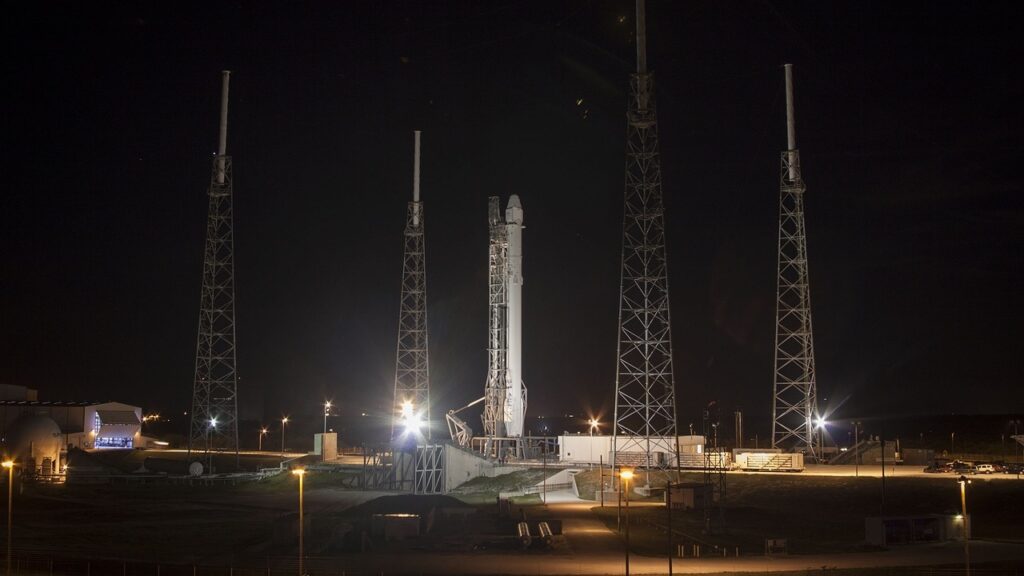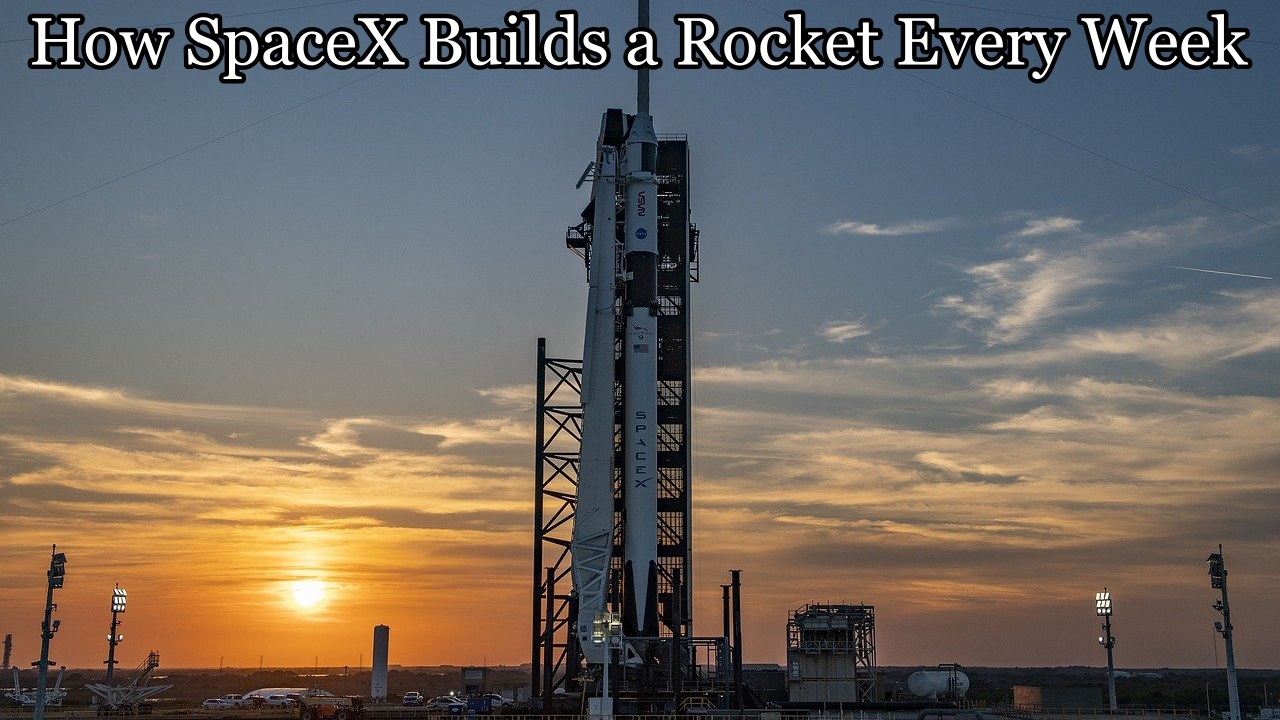SpaceX is aiming for the stars in 2025, with a bold and ambitious goal: to build one Starship rocket every three days. That’s two rockets per week, or 100 per year, all part of Elon Musk’s vision to colonize Mars and build a self-sustaining city of one million people on the Red Planet. But how exactly does SpaceX plan to achieve this monumental feat?
Let’s take a closer look at their game plan, the new Starship production facility, and what it all means for the future of space travel.
The Birth of the Star Factory
At the heart of this ambitious goal lies a brand-new manufacturing plant known as the Star Factory. This state-of-the-art facility is located in Boca Chica, Texas, on the Gulf Coast, just north of the Mexican border. The region is home to what SpaceX calls Starbase, the company’s hub for building and testing the world’s largest rocket system. Elon Musk himself spends considerable time in this area, which is soon to become SpaceX’s official headquarters.
The factory sits inland from Boca Chica Beach, where the rockets are launched, and was originally made up of long tents that were used to manufacture the early versions of Starship. While this setup allowed SpaceX to ramp up production quickly, it came with challenges like mud, dust, and birds that were constant distractions.
Overcoming Early Manufacturing Challenges
Despite these drawbacks, the tent system allowed SpaceX to experiment with different designs and manufacturing processes in a highly flexible environment, essential for building a never-before-seen spacecraft like Starship. Over time, this process of trial and error has led to the development of the Starship V2, an upgraded version of the original design that SpaceX believes will make their Mars colonization plan a reality.

The Evolution of Starship V2
The Starship V2 is set to be a fully reusable spacecraft capable of carrying people and cargo to both the Moon and Mars. While the new model isn’t radically different from its predecessor, it does feature a few notable improvements.
Key Improvements in Starship V2:
- Size and Capacity: Starship V2 is about 2 meters taller, giving it a 25% increase in fuel capacity. This enables the vehicle to fly higher and faster while carrying more weight.
- Flap Design: The nose cone and arrow flaps on Starship V2 have undergone a redesign to prevent the flaps from disintegrating during re-entry, which was a problem with earlier models. The new diamond-shaped flaps are mounted higher on the nose for better leverage, reducing heat build-up and improving aerodynamic efficiency.
- Heat Shield: The updated heat shield on the V2 includes more tiles and wraps around the vehicle’s nose cone, offering better insulation and reducing the risk of damage from extreme heat during re-entry.
The Star Factory’s Cutting-Edge Manufacturing Process
With the first phase of Starship production completed in tents, SpaceX has now transitioned to a much more efficient and permanent solution. The new manufacturing process inside the Star Factory is based on Elon Musk’s concept of linear adjacent flow, a system that improves on traditional assembly lines by working on different sections of the rocket simultaneously. Unlike the standard assembly line where a product moves down a conveyor belt, SpaceX builds different parts of the rocket in parallel on adjacent lines and integrates them later in the process. This allows for quicker, more efficient production, with no downtime between steps.
The Production Process:
- Cutting and Welding: The production begins with giant rolls of stainless steel, which are cut and welded into rings that form the rocket’s body. The nose cone, however, requires more intricate processes like stretch forming to create the necessary shapes for the pointy segment and the fuel tank domes.
- Segment Assembly: These steel rings are stacked and welded together in segments, with 3 to 5 rings per section. As these parts move down the production line, they gradually take shape into the iconic Starship structure.
- Integration and Final Assembly: As the rocket segments near the end of the line, specialized stations install components like heat shield tiles, plumbing, and thrusters. The final assembly takes place in Mega Bay, where the rocket components are stacked, engines are installed, and all finishing touches are added.
Aiming for 1,000 Starships per Year
SpaceX’s goal is nothing short of extraordinary: to build 1,000 Starships per year. While the Star Factory can currently produce around 100 rockets annually, Elon Musk has already begun laying the foundation for a second Star Factory near Cape Canaveral, Florida, which would double the production rate. Eventually, the goal is to reach the incredible pace of one Starship per day.
With this expanded production capability, SpaceX is preparing for the Mars City phase of their mission, with the eventual goal of sending 1,000 Starships on a convoy to Mars. This interplanetary fleet will transport humanity to the Red Planet, bridging the gap between Earth and Mars and establishing a self-sustaining colony.
The Road to Mars: Why Starship Matters
Building one rocket every three days isn’t just about numbers. It’s about laying the foundation for a multi-planetary future for humanity. Starship isn’t just a rocket—it’s a symbol of SpaceX’s commitment to pushing the boundaries of space exploration.
As we watch Starship evolve, we’ll see more advanced iterations and continuous improvements. With each successful test flight and new development at Starbase, SpaceX is getting closer to realizing Elon Musk’s vision of a human settlement on Mars.
Conclusion
SpaceX’s plans for 2025 are ambitious, but with their new Star Factory, advanced manufacturing processes, and rapid iteration of Starship designs, they’re making steady progress toward their goal. By building one rocket every three days, SpaceX is positioning itself to lead humanity into the next era of space exploration, one step closer to colonizing Mars. The road ahead is long, but the journey begins with building rockets—and SpaceX is ready to build more than ever before.
FAQ
SpaceX aims to build one Starship rocket every three days or two rockets per week to support their ambitious mission of Mars colonization.
The Star Factory is located in Boca Chica, Texas, which is also home to SpaceX’s testing and launch site known as Starbase.
Starship V2 is an upgraded version of the original Starship with improvements like increased fuel capacity and redesigned nose cone flaps to enhance aerodynamic efficiency and reduce heat build-up during re-entry.
The tent system allowed SpaceX to quickly begin manufacturing Starship while experimenting with design and production processes. The flexibility was crucial during the early stages when the rocket’s final design was still evolving.
SpaceX uses a linear adjacent flow production system, where different segments of the rocket are built in parallel on adjacent lines, allowing for faster and more efficient assembly compared to traditional moving assembly lines.
Initially, SpaceX aims to build 100 Starships per year, or one every three days, at the Star Factory. In the long term, the company hopes to ramp up production to 1,000 Starships per year.
Starship V2 includes more heat shield tiles that wrap around the nose cone to better insulate the spacecraft and reduce the risk of damage during re-entry, addressing issues seen in earlier versions.
SpaceX’s goal is to establish a fleet of 1,000 Starships to create a convoy that will travel from Earth to Mars, ultimately enabling humanity to colonize the planet and build a self-sustaining city.
The nose cone on Starship V2 has diamond-shaped flaps mounted higher for better leverage, improving aerodynamic efficiency and preventing heat build-up during re-entry. The design also includes enhanced heat shielding.
The second Star Factory at Cape Canaveral, Florida, is set to double Starship production capacity, with the goal of eventually reaching the capability to build one Starship per day, accelerating SpaceX’s Mars colonization timeline.
Read More:


1 thought on “How SpaceX Builds a Rocket Every Week: Behind the Scenes of Rapid Innovation”